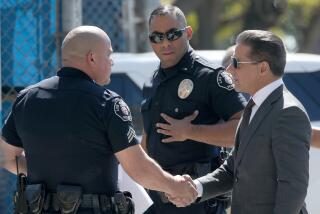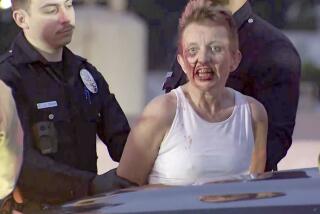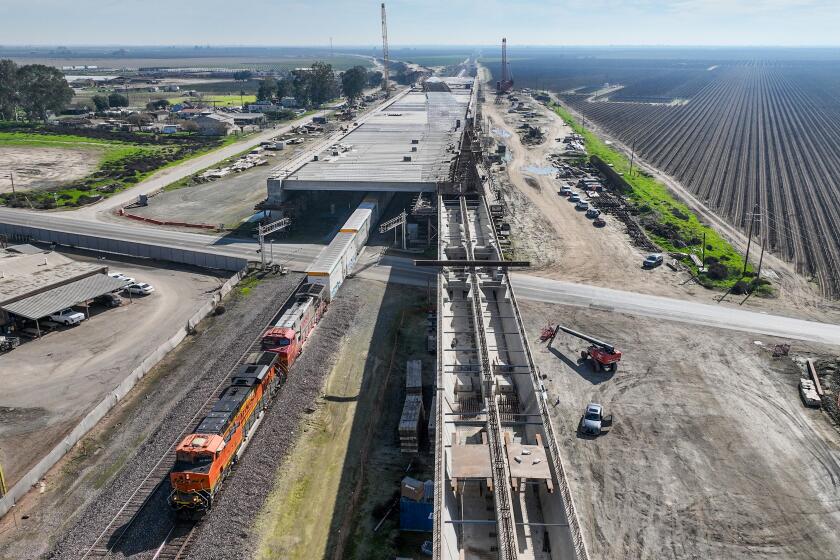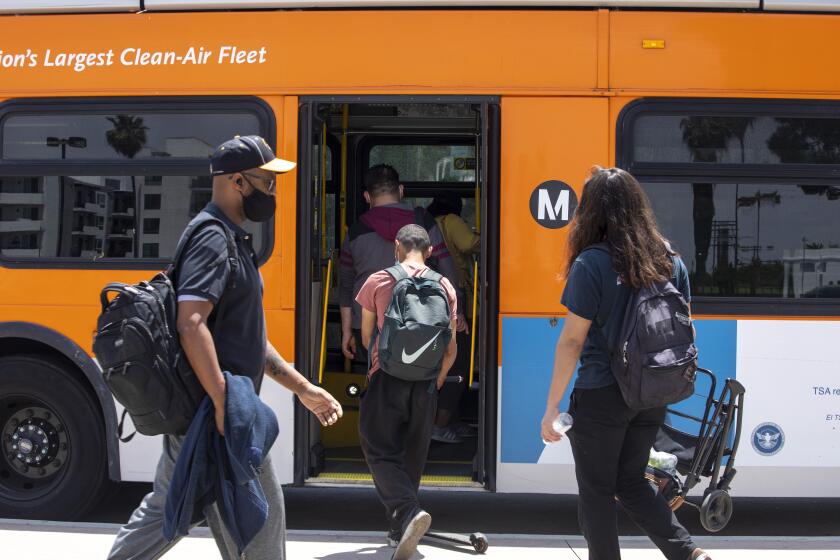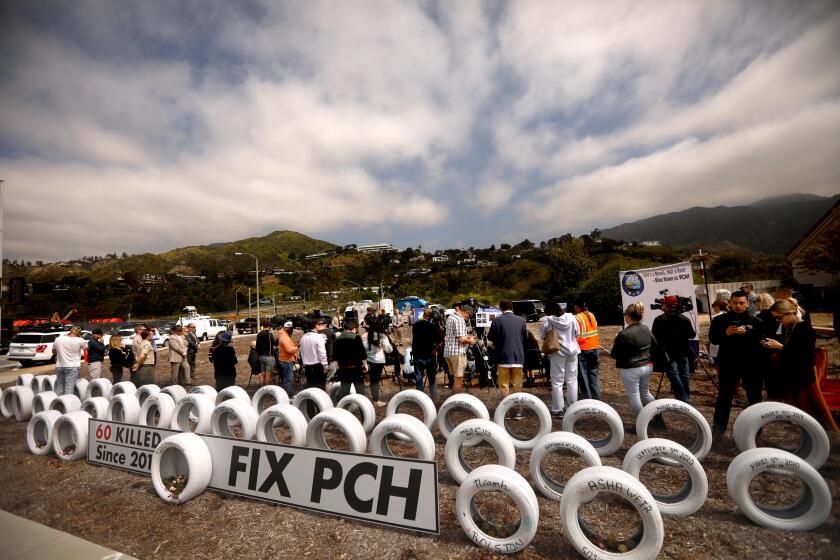Rail-Blazers Take a Jaunt in Pasadena
The Gold Line’s first passengers pressed against one another as the 10 a.m. train took a gentle curve Friday, heading north into Pasadena.
The train was late by just a few minutes, but none of the politicians, bureaucrats and journalists gathered for the line’s inauguration seemed to mind. It was a sneak peek at the long-awaited light-rail line that will run from Los Angeles to Pasadena.
“This is the day that people wait for, when you actually see the vehicle, and reality sets in,” said Gerald C. Francis, general manager of rail operations for the Metropolitan Transportation Authority, which will operate the line.
When it opens in July, the $725.5-million, 13.7-mile Gold Line will run through Chinatown, Mt. Washington and Highland Park. Planners envision as many as 250 trains and 38,000 riders a day on a route that will take about a half an hour to complete, from Sierra Madre Villa in Pasadena to Union Station in downtown L.A.
As the train began its journey, it jerked backward for a moment before leaving South Pasadena’s Mission Station. It reached a top speed of 30 mph with only a whisper of noise. Along the route, police blocked off intersections and people waved from the streets. One person held up a sign, “You’ve Got Rail!”
For MTA train operator Gwen Bonville, a member of the start-up team that has been testing the trains and the track for two months, Friday’s trip was cause for a bit of nervousness.
“Everybody is here,” she fretted, including her bosses’ boss and “all of the bigwigs.”
“I convinced myself that this is what I do every day,” she said after completing the 1 1/2-mile trip from South Pasadena to Pasadena in under three minutes.
Another operator returned the passengers to Mission Station less than 15 minutes after they embarked.
How was the ride? Train aficionado Tom Nelson gave it his stamp of approval. “It compares with the airport express train in Hong Kong,” he said. “This was similar in feel: a good, smooth ride.”
“It certainly gave a sense of comfort and security,” said Pasadena Mayor Bill Bogaard, who welcomed the riders to the Fillmore Station in Pasadena and then boarded the train going south. “There was nothing unsettling at all about it.”
The Gold Line is regarded as a key element in the region’s growing transit network. From it, riders will be able to connect with the MTA’s light-rail system, which already covers roughly 60 miles, and with Amtrak, Metrolink and buses.
The Gold Line will be linked with a planned six-mile Eastside line, with construction scheduled to begin next year.
An extension of the Gold Line, to the Los Angeles County limits in Claremont, is also being planned.
MTA began construction of the Gold Line in the early 1990s. But the transit agency, crushed by debt from the construction of its separate 17-mile subway system, floundered at the task.
With cost overruns dogging the Pasadena line, a frustrated state Legislature took the project away from the MTA in 1999 and created a construction authority whose sole task was to build the line. It is now about 85% complete, with stations nearly finished and track and power systems almost in place.
“We are on schedule, we are on budget and we are looking forward to opening in July 2003,” said Paul Little, a Pasadena city councilman and chairman of the Gold Line construction authority. He was among the passengers Friday, as were county Supervisor Mike Antonovich and Rep. Adam B. Schiff (D-Burbank), who was a state senator when the line started construction.
“This may be the last free ride for some of us,” Little quipped before boarding the train.
More to Read
Start your day right
Sign up for Essential California for news, features and recommendations from the L.A. Times and beyond in your inbox six days a week.
You may occasionally receive promotional content from the Los Angeles Times.
